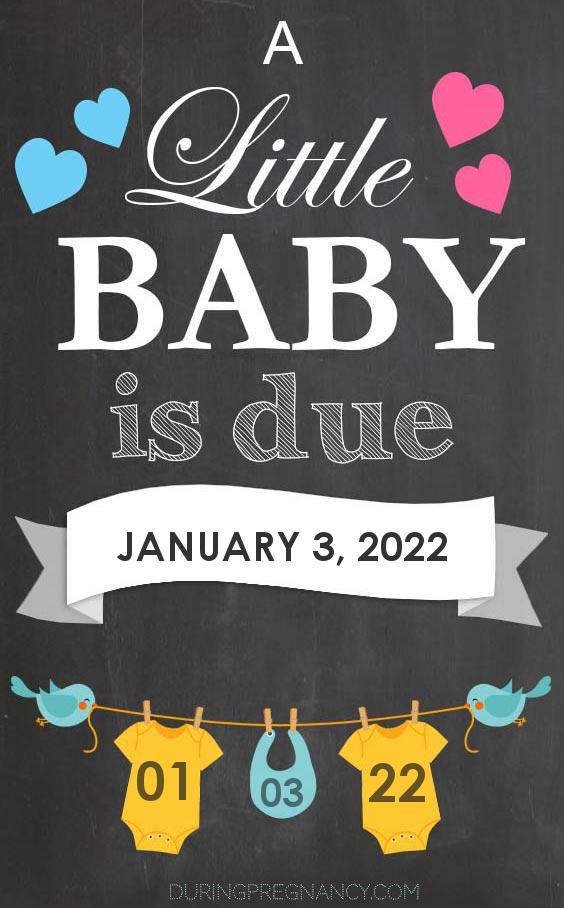

The ACOG cites that In one study, 40 percent of women had to have their due dates adjusted because of a discrepancy of more than five days between ultrasound dating and a due date calculated on their periods alone, while those numbers reduced dramatically if a second-trimester ultrasound was performed. The biggest takeaway from the new recommendations is that it’s important for doctors to perform ultrasounds on pregnant women early in their first trimester (up to 13 weeks). More premature babies could receive steroids to help their lungs develop, for example, or women with complications could feel more confident in reducing their babies’ risk for the NICU. “This information is vital for timing of appropriate obstetric care, scheduling and interpretation of certain antepartum tests, determining the appropriateness of fetal growth, and designing interventions to prevent preterm births, post-term births and related morbidities,” states the ACOG.

Why all the fuss about getting due dates right? Well, in addition to what I think is supporting a mother’s mental health (those last few weeks of pregnancy can be brutal), a more accurate due date provides better overall care for baby. It joined forces with the American Institute of Ultrasound in Medicine and the Society for Maternal-Fetal Medicine to recommend that doctors now calculate due dates with an early, first-trimester ultrasound and combine those findings with a woman’s menstrual cycle information to determine a more accurate due date. Just enter your pregnancy due date or other information to create and calculate a personalized weekly and daily pregnancy calendar. Now, the American College of Obstetricians and Gynecologists (ACOG) is cracking down on the uncertainty surrounding a woman’s due date. This pregnancy calculator helps you find out exactly how many weeks pregnant you are right now, details your baby's development, and precisely what is happening to your body at the moment. And let’s face it, sometimes women do not recall exactly the date of their last period. A woman who has a longer cycle and ovulated later but didn’t realize it could actually have a due date that’s off by a week - hence the reason doctors usually say there’s a good two-week “cushion” for calculating due dates. The problem, of course, is that not every woman’s cycle operates on a regular 28-day pattern, and ovulation can be unpredictable and change as a result of stress, birth control or sleep deprivation. By the time most women find out they are pregnant when they miss their periods two weeks later, they are already considered a month pregnant. Assuming a regular, 28-day cycle for a woman, ovulation usually occurs around day 14 of the cycle - so if fertilization occurs during that window, a woman is considered already two weeks pregnant, as the due date is calculated from day one of the cycle. But now, doctors have new guidelines to ensure that women are receiving the most accurate due date possible.Ĭurrently, due dates are calculated by using an estimate based off of a woman’s last period and the “average” length of pregnancy, which is a total of 40 weeks. Traditionally due dates are calculated by last menstrual period.

It is a date you plan things around, and a date that you know will change everything. Use the following to calculator to add or subtract 40 weeks (280 days, or 9.20547 months) to or from a given date.When are you due? When you are pregnant, a certain date becomes very important. Or, using a shorthand method, you can also estimate your baby's birth date by adding 7 days to the first day of your last period and then subtracting 3 months from the result to get the month and day of the due date.įor example, if the first day of your last menstrual period was April 7th, your estimated due date would be January 14th (4/7 + 7 days = 4/14, minus 3 calendar months = 1/14). Therefore your baby's due date can be estimated by adding 280 days (14 + 266) from the first day of your last menstrual period. His studies also showed that the average ovulation occurred 14 days from the first day of a woman's last menstrual period. Naegele's studies concluded that the average length of time between conception and a baby's birth was 266 days. Hence the formula is often referred to as Naegele's Rule.ĭr. The formula most often used to calculate a baby's due date is based on a calculation developed by a German obstetrician Dr.


 0 kommentar(er)
0 kommentar(er)
